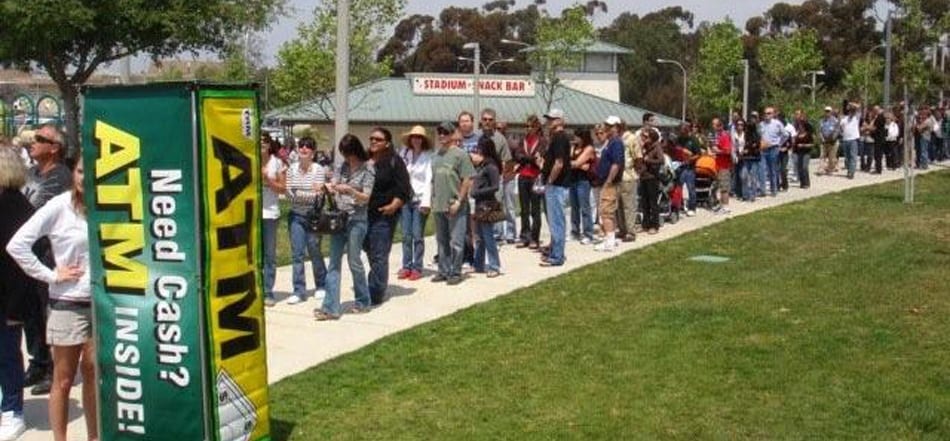Over the past decade, many festivals have been striving to cut their emissions and become more sustainable environmentally. This is in part a result of how millennials respond to sustainable events. So aside from the obvious global benefits, your concerted efforts win a lot of plaudits with an increasingly eco-engaged public. And if it’s embedded into the mentality of attendees, it can also create a really clean and beautifully kept festival site.
Here are 7 festivals that are really blazing the trail for eco-friendly event production.
Lightning in a Bottle
This long-running Californian festival is extremely well known for its environmental efforts. Surrounded by a dry lake bed (it’s reportedly filled this year after heavy rains in California), Lightning in a Bottle implores its young attendees to pick up after themselves and think hard about whether their trash is landfill, compost or recyclable. They also reportedly recycle and reuse all of the materials used to build the stages, which certainly adds to the event’s unique aesthetic.
Burning Man
Burning Man’s famous ‘Leave No Trace’ policy has influenced a lot of other festivals around the world, and has been an integral element of the event’s messaging since it began. But it should be said that the event itself, with so many gas guzzling art cars and 80,000 people making the pilgrimage to a distant expanse in Nevada (not to mention the man that is actually burned), isn’t very eco-friendly. This site put the Burn’s estimates at 49,000 tonnes of greenhouse gas emissions, which is the equivalent to Swaziland’s emissions over a week.
NorthSide
The Scandinavians are streets ahead of the rest of the world in many things, but they are doing particularly exemplary work in climate initiatives. NorthSide is a Danish festival that is changing the conversation about eco-friendly events. Most of its 35,000 guests arrive by bike or on foot (there is no parking lot), and are greeted by “Trash Butlers”. The festival also employs a team to sift through the garbage, and they estimate that around 60 percent of the trash is recycled.
Secret Solstice
Iceland is another Scandinavian nation known for its environmental efforts, as well as for its unique abundance of renewable energy options.
The tiny Norse nation’s premiere music festival Secret Solstice claims to not use a drop of diesel in any of its onsite production, and much of the festival is powered by Iceland’s plentiful geothermal energy. The event was also officially declared carbon neutral in 2016.
Cambridge Folk Festival
This very long-running English folk event took the A Greener Festival Award at the 2016 UK Festival Awards, a fitting accolade for a festival that has been long ahead of the curve and trends in acknowledging the effect that festivals have on the environment. Of its victory, A Greener Festival’s Ben Eddie said; “The [Cambridge Folk Festival] champions a sustainable approach amongst its audience, traders, contractors, and staff, evidencing a real commitment to facilitating wider change within the industry and local community. It’s a holistic mindset that is key to success, with sustainability clearly at the core of planning and delivery.”
DGTL
This two day dance music festival in Amsterdam has come up with some novel ways to lessen its carbon footprint and engage their audience. DGTL has gone completely veggie, and is reportedly reusing the attendee’s urine as fertilizer!
In 2017 they introduced a revolutionary ECO coin, which punters get in exchange for doing a workshop or listening to a talk on environmental issues. This currency can then be used to buy food, unique products and even access to a VIP area.
Shambala (UK)
The 2014 and 2015 winner of A Greener Festival’s award, Shambala is a well-known example of how dedication to reducing emissions can become a beloved aspect of your festival’s brand.
The organizers have managed to reduce their emissions by 81 percent in the past five years, and in 2016 became completely meat and fish free. They also managed to sell 594 metal water bottles on site, and offset the sale of an estimated 10,000 water bottles.


